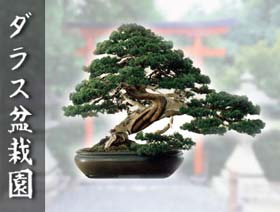|
The combination of the
elegant, delicate leaves and the silky pale trunk, makes Murraya
paniculata very appreciated in China and in India,
where it is a spontaneous species. The white, sweet-smelling,
bell-shaped flowers look like the flowers of Jasmine,
while the summer colourful berries seem oranges on a small
scale. It is also known as silk tree for the silky aspect of its
bark. This evergreen shrub is a tropical species and needs to be
cultivated in an adequate environment; in mild regions it is
used just as indoor bonsai tree.
|
|
|
|

|
|
.gif) |
|
|
|
|
|
|
|
It
requires a lot of light and heat, but it needs
also some protection from the hottest rays. In
winter keep the temperature over 15°C.
|
|
|
|
|
|
|
|
Everyday
during the vegetative season; water it less
frequently in winter. The soil must be kept
constantly wet, but never full of water.
|
|
|
|
|
|
|
|
Every
two weeks, from mid-spring to the beginning of
autumn. In winter, fertilize every week with
little fertilizer.
|
|
|
|
|
|
|
|
In
alternate years, in spring, using base mould.
|
|
|
|
|
|
|
|
Whenever
during the vegetative season. When the new buds
have reached 5-6 couples of leaves, poll them to
two couples using your fingers.
|
|
|
|
|
|
|
|
By
seeds in autumn. By semi-wooden cuttings in
spring-summer.
|
|
|
|

Suitable
for all sizes and for Informal Upright, Prostrate,
Cascade, Double Trunk, Common Stump, Group styles.
|
|
|





